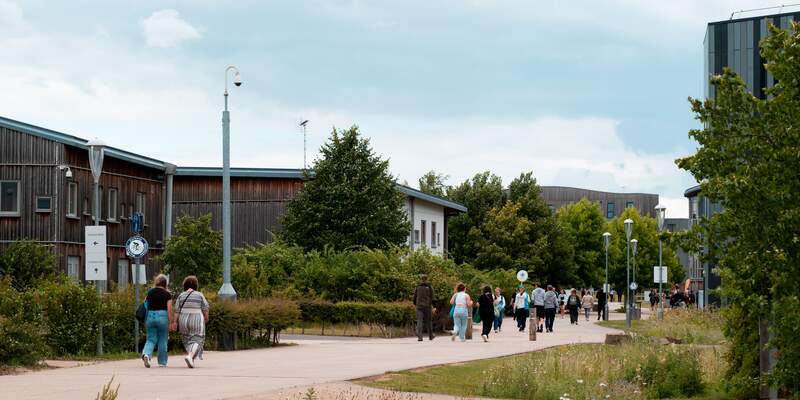
Unconscious bias
The information on these pages is designed to help you understand what unconscious bias is and explore ideas about what you can do to help reduce its negative effects in your work, department, and the University as a whole.
We have a range of resources, references, videos, web pages, and tools, which you can read at your own pace, and revisit at any time. Our recommendation is to read the Introduction to Unconscious Bias, along with one other topic that you feel is relevant to your work.
You can complete a different quiz for each module on the Learning Management System to demonstrate your learning once you've read the information.
You are also encouraged to identify two or three things you will do to counter unconscious bias, such as changing work practices or exploring particular topics further, and make a brief action plan to take back to your department or team.
This resource has been designed to help staff explore other perspectives and initiatives on unconscious bias across the University, so you are also welcome (and encouraged) to explore other resources too.
A range of criticisms have been made regarding unconscious bias training (see Noon, 2017, for example). It is suggested that such training is limited because it seeks change in individuals rather than systems and processes.
It is argued that seeking change at an individual level rests on the assumption that people only need to become aware of their biases and they will be sufficiently empowered to overcome them. In reality, people may not have the power, ability, or opportunity to effectively counteract biases within themselves or within the structures and systems they operate in. They might also feel their biases are justifiable, and continue with them consciously.
Therefore, it has been suggested that unconscious bias training should emphasise “structures and context that might produce and reproduce bias” and “systemic failures of the process, procedures and operations of the organisation” (Noon, 2017).
This information seeks to raise awareness within individuals about unconscious bias in general and their own unconscious biases. It also seeks to share learning across the University about practical things that teams and departments have built into their systems and processes to mitigate unconscious bias, so that others can adopt or adapt them, or be inspired to develop new initiatives themselves.
Navigating this information
We’ve organised the information into four key themes:
- (1) an introduction to unconscious bias and key concepts
- (2) unconscious bias in staff recruitment
- (3) unconscious bias in staff retention and progression
- (4) unconscious bias in student recruitment, progression, and retention

Introduction to unconscious bias
Gain an understanding of unconscious bias and explore how you can help reduce its negative effects in your work.

Unconscious bias in staff recruitment
Find out about bias in the staff recruitment and selection process, and hear from University staff members.

Unconscious bias in staff progression and retention
Learn about the University's commitment to tackling bias, and our future aspirations regarding staff recruitment, retention and progression.

Unconscious bias in student recruitment
Find out about the University's commitment to tackling bias in student recruitment, and our future aspirations for our student body.

Complete an action plan
Reflect critically on your own work, and the work of your department or service area.
Our unconscious bias training is based on information from high-quality sources which can be found below.
Anselmi, P., Vianello, M., Voci, A. and Robusto E. 2013. Implicit Sexual Attitude of Heterosexual, Gay and Bisexual Individuals: Disentangling the Contribution of Specific Associations to the Overall Measure. PLoS ONE. 8 (11).
Boring, A., Ottoboni, K., and Start, P.B. 2016. Student evaluations of teaching (mostly) do not measure teaching effectiveness. ScienceOpen Research. [Online]. Available: https://www.scienceopen.com/hosted-document?doi=10.14293/S2199-1006.1.SOR-EDU.AETBZC.v1 [Accessed 20.01.2023].
Borkin, H. 2021. Unconscious Bias Literature Review: Bias in the Curriculum. [Online]. Available: [Accessed 25.11.2022].
Equality Challenge Unit. 2013. Unconscious Bias and Higher Education. [Online]. Available. [Accessed 07.07.2023].
Gaucher, D., Friesen, J., and Kay, A.C. 2011. Evidence That Gendered Wording in Job Advertisements Exists and Sustains Gender Inequality. Journal of Personality and Social Psychology. 101 (1): 109–128.
Grogan, K.E. 2019. How the entire scientific community can confront gender bias in the workplace. Nature, Ecology & Evolution. 3 (3–6). https://doi.org/10.1038/s41559-018-0747-4
Jones, L.C., Sarju, J.P., Dessent, C.E.H., Matharu, A.S. and Smith, D.K. 2022. What Makes a Professional Chemist? Embedding Equality, Diversity, and Inclusion into Chemistry Skills Training for Undergraduates. Journal of Chemical Education. 99 (1): 480–486.
Kahneman, D. 2012. Thinking, fast and slow. London : Penguin.
Moss-Racusin, CA, Dovidio, JF, Brescoll, VL, Graham, M and Handelsman, J. 2012. Science faculty’s subtle gender biases favor male students. Proceedings of the National Academy of Sciences for the United States of America. 109 (41): 16474–16479.
Noon, M. 2018. Pointless Diversity Training: Unconscious Bias, New Racism and Agency. Work, Employment and Society. 32(1): 198–209.
O'Brien, K., Petra, V., Lal, D., Kwai, K., McDonald, M., Wallace, J., Jeanmonod, C., and Jeanmonod, R. 2022. Gender coding in job advertisements for academic, non-academic, and leadership positions in emergency medicine. The American Journal of Emergency Medicine. 55 (2022): 6-10.
Steinpreis, RE, Anders, K, Ritzke, D. 1999. The impact of gender on the review of the curricula vitae of job applicants and tenure candidates: a national empirical study. Sex Roles 41(7/8): 509–528.
Westwood, S. 2022. Discussion document: a) Gender bias in student teaching feedback on teaching colleagues and how to mitigate this; b) Unconscious bias (UB) training. Unpublished: University of York. Available: https://drive.google.com/file/d/1UtFzi0dv8wNhuXFqcidqvqLW5sc4VjzD/view?usp=share_link
Wood, M, Hales, J, Purdon, S, Sejersen, T and Hayllar, O. 2009. A test for racial discrimination in recruitment practice in British cities: research report no 607. Department for Work and Pensions, London.
Learn more about Equality, Diversity and Inclusion at the University.